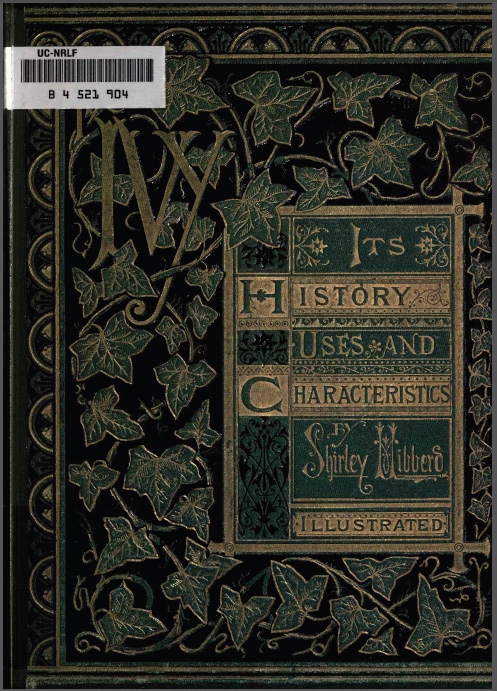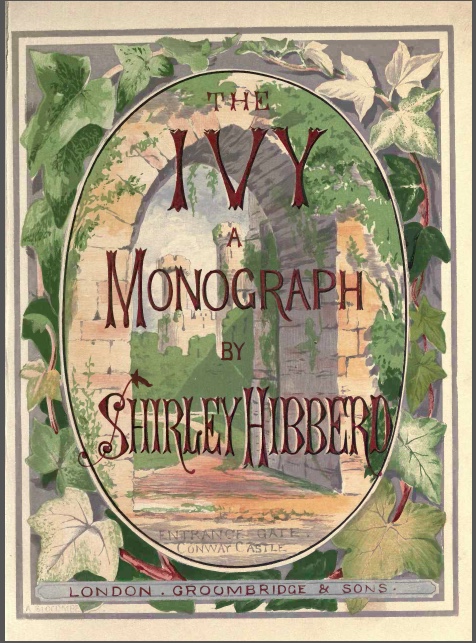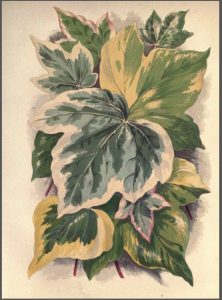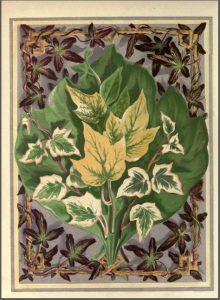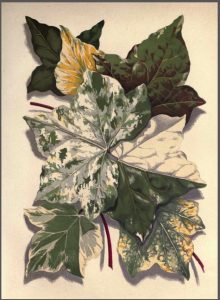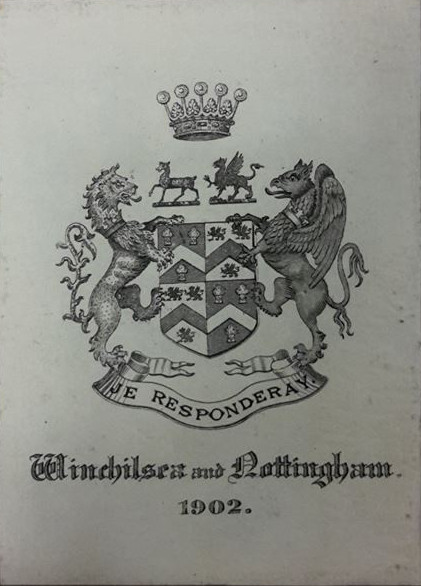Alastair Culham & Dawn Bazely
The first ever post for #Adventbotany was short entry on Ivy by Alastair Culham.
1st day of #AdventBotany – Hedera helix – highly variable evergreen leaves symbolize eternity and resurrection. Ivy has a distinctive waxy sheen to the upper surface f the leaf. It’s reputed to keep witches away if you grow it up a house wall. Long associated with mid-winter festivals including Christmas because it stays green even in this cold dark season. All leaves in the first photo are from a single plant while each from the second is from a different taxon!
Ivy contains falcarinol, a natural fungicide.
Each day during advent there will be a new entry by @RNGherb or @DrMgoeswild (since when we have added many other authors!)
Editor’s note:
From Dr Stephen Jury – The first new molecular systematic studies on ivy were done in Reading by Dr Pablo Vargas on a post-doc appointment. He continues this work as a member of staff in Madrid. He solved some problems and agreed with McAllister’s earlier unaccepted treatments that are now accepted in a book, following several important publications in botanical journals!
McAllister, H. & Marshall, R., (2017) Hedera: the complete guide. Peterborough, RHS.
Since that blog, as with some other privileged species, a new article was added, this time by Dawn Bazely, a regular contributor.
The first Advent Botany post, on December 1st, 2014, was about ivy, that most classic of British festive season species. English Ivy, as it’s known in North America (Hedera helix) is an evergreen woody climbing plant. It is native to much of Europe and Asia, and it was introduced to North America as a garden plant, where it promptly jumped over the fence. Ivy is considered invasive in Washington State, USA and in British Columbia, Canada. It also does very well in my Toronto front garden.
Ivy always makes me think of 19th century England, perhaps because it’s so common in Victorian North Oxford, where I lived for 6 years. We know that ivy was a popular garden plant during Victorian times because James Shirley Hibberd (1825 – 1890), the very successful gardening writer and journalist (Wilkinson 2012), devoted an entire book to it, called: The Ivy, its history uses and characteristics, a Monograph. Hibberd gives the reader lots of “historical and literary memoranda” about ivy, including some musings on its roles at Christmas, and in tavern and pub signage!
“The holly and the ivy have, from the earliest times held the mastery in providing the green garniture of the Christmas feast, and in many a bright old carol are their virtues celebrated in connection with the great season of rejoicing in the Christian year.” p.11
General literacy increased during Victorian times, as a result of the spread of charitable and private schools,while the Elementary Education Act (1870) mandated state schooling for everyone. This helped to create a demand for Hibberd’s affordable colour printed gardening books and magazines. His prolific writing was aimed at amateur gardeners: people with low to middle incomes, who were gardening in small, city gardens (Wilkinson 1998). Many of Hibberd’s readers would not have had a paid professional gardener.
Today, the modern technologies of digitization and the internet are allowing us to experience British Victorian era botany. We can all download and read a digitized copy of Hibberd’s The Ivy, from the University of California Libraries via the Biodiversity Heritage Library.
Ivy is common as a friend or an interloper in many gardens. Here it is growing up a post in the author’s garden.
References:
Shirley Hibberd, J. 1872. The Ivy, a monograph. London, Groombridge and sons. https://doi.org/10.5962/bhl.title.17338
Wilkinson, A. 1998. The preternatural gardener: The Life of James Shirley Hibberd (1825-90). Garden History. 26: 153-175. http://www.jstor.org/stable/1587201
Wilkinson, A. 2012. Shirley Hibberd, The Father of Amateur Gardening: His Life and Works 1825–1890. Cortex Design Publishers. ISBN 978-0-956-809605
WEBSITES referenced in this post:
- http://blogs.reading.ac.uk/crg/2014-botanical-advent-calendar/
- https://www.nwcb.wa.gov/weeds/english-ivy
- http://bcinvasives.ca/invasive-species/identify/invasive-plants/english-ivy/
- https://en.wikipedia.org/wiki/North_Oxford
- https://en.wikipedia.org/wiki/Shirley_Hibberd
- http://www.shirleyhibberd.co.uk/index.html
- https://en.wikipedia.org/wiki/Education_in_England
- https://en.wikipedia.org/wiki/History_of_education_in_England
Photos:
- Hibberd. The Ivy – Book cover
- Hibberd The Ivy – Title page
- Hibberd The Ivy – frontispiece
- Hibberd The Ivy – p. 62
- Hibberd The Ivy – p 78
Editor’s notes
Checking the University of Reading Library, I see that we have a copy of Hibberd’s monograph ‘Presented by Lord Winchilsea, Dec. 1931’ bearing the ‘Winchilsea and Nottingham. 1902 (Armorial bookplate)’ – figured here (thank you Erika Delbecque)
For more #AdventBotany see our 2020 index page.



